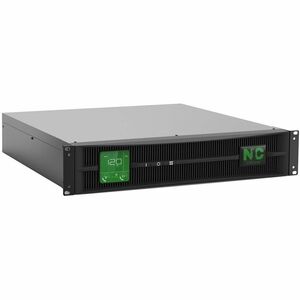The thought of changing UPS batteries is a bad one.
The thought of paying for new UPS batteries every few years is even worse. We wanted to end all that, which is why the team here at N1 Critical Technologies developed and launched the first lineup of single-phase uninterruptible power supplies using lithium-ion batteries as the backup power source.
We’ve mentioned the many benefits of using lithium-ion countless times, but how looking at the drawbacks of VRLA batteries, the traditional source of power in single-phase UPS systems.
Here is a “tale of the tape” that should drive any IT director or facilities executive away from VRLA and toward N1 Critical’s state-of-the-art, long-lasting lithium-ion UPS systems.

Vulnerability
The UPS battery is the most vulnerable part of a UPS system. VRLA batteries need more careful and ongoing maintenance and management (as you’ll read below) to try and extend battery service life and help prevent costly downtime.
Environmental Factors
Environmental factors, such as ambient room temperature or heat from the charging current, reduces the life of the VRLA battery far more drastically than lithium-ion batteries. Our batteries are tested to function in temperatures of up to 140ºF without significant performance loss. VRLA batteries work best at a temperature of 77°F. For every 15°F temperature increase, the life of the battery is reduced by 50%.
End of Life
Speaking of battery life, VRLA batteries reach their “end of useful life” much more quickly than a lithium-ion battery. The “end of useful life” for a UPS battery as traditionally defined as when it can no longer supply 80% of its rated capacity in ampere-hours. When a UPS battery reaches 80% of its rated capacity, the aging process accelerates, and replacement is necessary (or at least strongly recommended). VRLA batteries lose capacity with every discharge and recharge. Lithium-ion batteries can withstand more than 1,000 charge and discharge cycles, and have an expected service life under normal operation conditions of 15 years.
Battery Monitoring Complexities
As UPS systems grow in size, they become more complicated, especially when more than one battery powers the load. Large systems require multiple strings of batteries, increasing complexity of battery maintenance and support. For VRLA, each individual battery on the string needs monitoring to prevent a single bad battery from taking down the load. There are often significant additional costs to add battery maintenance systems, whereas lithium-ion UPS systems from N1 Critical have battery monitoring systems already in place inside the battery. The battery monitoring can alert users of potential problems before they become big problems during a power outage, and maintain the batteries by preventing overcharging or running at too hot of a temperature.
Storage Difficulties
VRLA batteries that aren’t used should be charged every three to four months to prevent damage and loss of usability. (Who wants to add that kind of reminder to their calendars?) Permanent loss of capacity (when not charging) occurs after 18 months. Lithium-ion batteries can be stored for 10 years with only moderate capacity loss (when stored between 32º-77ºF). Lithium-ion batteries should be stored in a semi-charged state, ideally at 40 percent, to prevent voltage dropping too low, or to prevent the battery suffering from the stress of being stored at a full capacity. When you’re ready to use them, just charge them up to full and you’re ready to go.
Battery Replacements
The standard lifespan for VRLA batteries is three to five years, before replacements are required. However, expected life varies due to environmental conditions, number of discharge/recharge cycles, and adequate maintenance. Replacement may even be needed sooner than three years. Lithium-ion batteries virtually eliminate the need for battery replacements. With a 15-year life expectancy, there’s no worry about finding replacement batteries, shelling out sometimes several hundred dollars for them and swapping them out. Just keep the UPS clean of dust and debris with a few bursts of pressurized air, and occasionally perform a battery discharge test under load (done from the system’s software) and that’s it.
Safety and Thermal Runaway
Virtually all batteries (VRLA and Lithium-ion) can suffer from thermal runaway, which occurs when the heat generated in a cell exceeds its ability to dissipate that heat. This can lead to an explosion or fire. Thermal runaway may be caused by overcharging, excessive charging, internal physical damage, internal short circuit, or the batteries being used in too hot of an environment. The batteries used in N1 Critical UPS units have internal battery monitoring circuits, which are designed to shut down the battery in the event of overheating or overcharging. The battery chemistry — lithium iron phosphate — is also one of the safest lithium-ion battery chemistries available. Such “LiFePO4” batteries are typically not prone to thermal runaway because of the less volatile chemicals used in the electrolyte.
Warranty and Replacement
Lastly, N1 Critical has taken the worry away from warranty issues by providing a 10-year replacement warranty on both the electronics and the battery. Most UPS manufacturers only provide a standard warranty on the electronic components and circuitry. For additional costs, buyers could purchase add-on protection for the UPS electronics and batteries. Not so with N1 Critical. Our warranty comes standard, with no additional costs.



